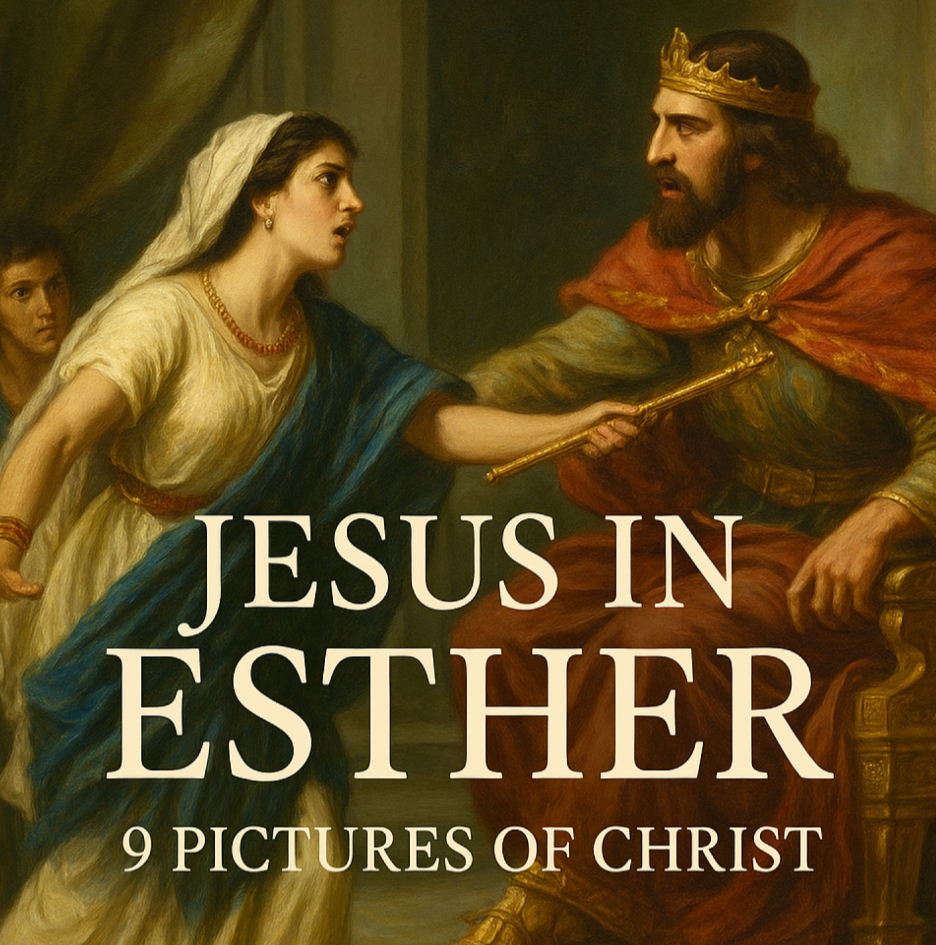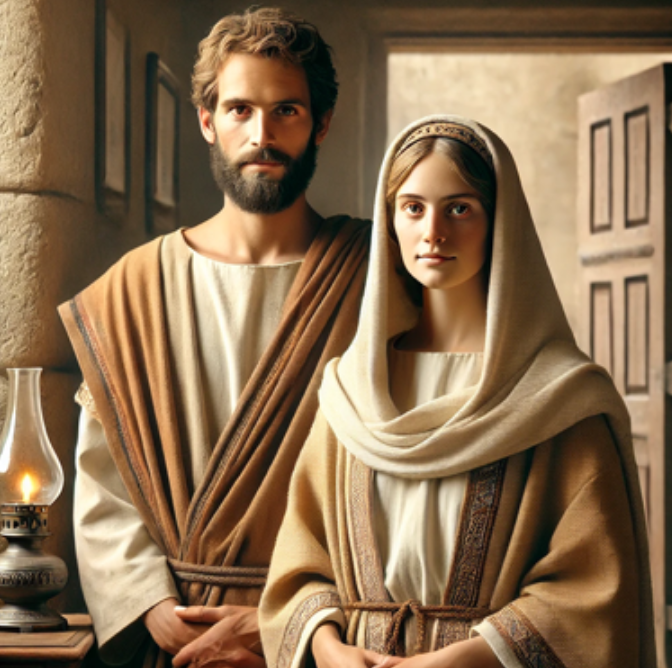The story of Esther takes place in a time when the Jews were living under the rule of the Persian Empire. A young Jewish girl named Esther was chosen to be queen, even though no one knew she was a Jew. At the same time, a wicked man named Haman rose to power and convinced the king to make a law to kill all the Jews. He didn’t know Queen Esther was one of them.
Esther’s cousin Mordecai told her she had to speak up and do something—even if it cost her life. With great courage, Esther went before the king without being invited, which could’ve gotten her killed. But the king showed her favor, and through her bravery and God’s timing, the Jews were saved, and Haman was destroyed.
The whole book of Esther is a story of God working behind the scenes. You never see His name, but you can’t miss His hand. And if you look closely, you’ll also see pictures of Christ all the way through.
Even though Esther lived hundreds of years before Christ came to earth, her life and the things that happened around her give us clear pictures of our Savior. Let’s look at a few of them.
1. The Advocate Before the King
Esther knew the risk. To go before the king without being called could’ve cost her life. But she went anyway—to speak up for her people who were about to be destroyed (Esther 4:16; 5:1-2). That’s a clear picture of Jesus. He stands before the throne of God on our behalf, interceding for us, pleading our case—not because we deserve it, but because He loves us (1 John 2:1; Hebrews 7:25). And just like Esther, it cost Him dearly.
2. The Mediator
Esther wasn’t just bold—she was the go-between. The Jewish people had no way to speak to the king. Esther stepped in. That reminds us of Christ, who is the one and only Mediator between God and man (1 Timothy 2:5). He made a way for us to be brought back to God.
3. The Deliverer
Haman had an evil plan. It looked like it would work. But God had another plan. Through Esther’s courage and timing, her people were saved (Esther 8:5-8). That’s what Christ does for us. He rescues us—not just from earthly danger, but from eternal death (Colossians 1:13-14).
4. The Rejected but Exalted One
Here’s where Mordecai comes in. He did right, but at first, he was ignored. Haman hated him and wanted him dead (Esther 3:5-6). But in the end, Mordecai was honored, lifted up, and given great authority (Esther 6:11; 10:3). Sound familiar? Jesus was rejected by His own people (Isaiah 53:3; John 1:11), but now He’s seated at the right hand of God, highly exalted (Philippians 2:9-11).
5. The Sacrificial Love
Esther said it plain: “If I perish, I perish” (Esther 4:16). That kind of love—the kind that’s willing to die for someone else—is what Christ showed perfectly. He laid down His life so we could be saved (John 10:11; Romans 5:8).
6. The Feasting and Rejoicing
After the Jews were saved, they had a feast—Purim. A time of joy and celebration (Esther 9:20-22). One day, we’ll have a feast too—the Marriage Supper of the Lamb (Revelation 19:7-9). All because Christ won the victory.
7. The Great Reversal
Haman built gallows to hang Mordecai, but ended up getting hung on them himself (Esther 7:10). What Satan meant for evil at the cross—God used to win the greatest victory. Through His death, Christ defeated the devil (Colossians 2:14-15). What a reversal.
8. The Hidden Hand of God
God’s name isn’t in Esther, but His fingerprints are everywhere. Every little twist and turn was part of His plan. That’s just like Christ—He’s always working behind the scenes, holding all things together (Hebrews 1:3), even when we can’t see Him.
9. The Sheep and the Goats
Esther shows us a picture of final judgment too. There’s a clear difference between Haman and Mordecai—between the proud and the humble. Just like in Matthew 25, there’s a separation between the sheep and the goats.
Haman (Goats): Proud, self-centered, and full of rebellion. He’s a picture of those who reject God’s way (Esther 7:9-10).
• Proverbs 16:18; Matthew 25:41-46; Psalm 7:15-16
Mordecai and Esther (Sheep): Humble, faithful, and willing to serve. They’re a picture of God’s people—those who hear His voice and follow Him (Esther 6:10-11; 8:16-17).
• John 10:27-28; James 4:10; Matthew 25:34
Judgment and Reward: Haman’s fall and Mordecai’s rise show the justice of God.
• Revelation 20:11-15; Psalm 37:34
Celebration of the Faithful: Purim points to the joy that comes after the battle is won.
• Revelation 19:7-9; Nehemiah 8:10
⸻
Even though Jesus’ name isn’t in Esther, He’s still there. You just have to look. And when you do, you’ll see that the whole Bible—from front to back—is all about Him.




